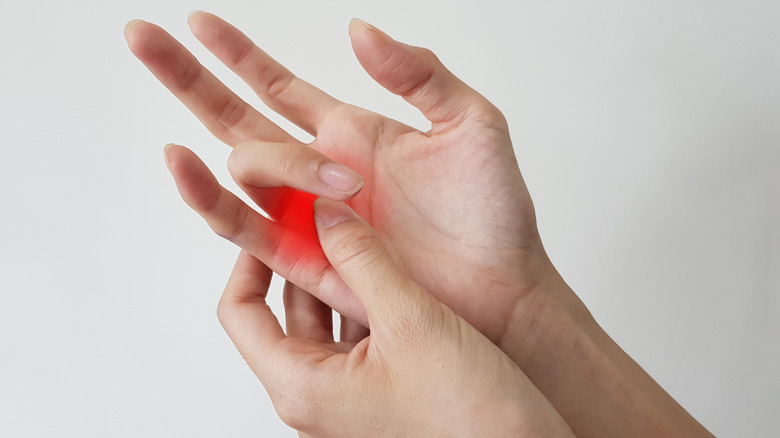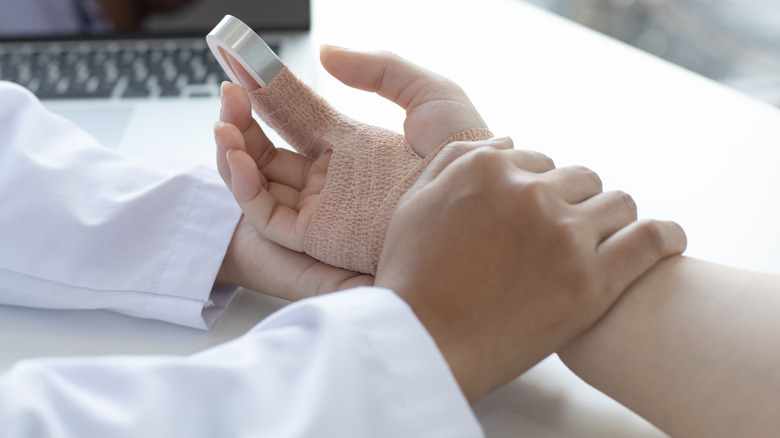Here's What's Really Causing Your Trigger Finger
People whose jobs require repetitive gripping or grasping with the hands may find themselves susceptible to a condition known as trigger finger (via Cleveland Clinic). Medically referred to as stenosing tenosynovitis, trigger finger is characterized by stiffness in the finger that locks it into a bent position. Most often occurring in the thumb or fourth finger of the dominant hand, trigger finger generally emerges before the age of eight or in those 40 years of age or older (via StatPearls).
People with trigger finger may experience soreness, popping sensations when attempting to move the fingers, pain, stiffness, inflexibility, swelling in the hands, or locking of the fingers, per Cleveland Clinic. Often, pain associated with the condition is experienced at its worst during the morning time, when trying to straighten the affected finger, or while grasping something tightly (via WebMD).
Cases of trigger finger can range from mild to severe. So what is it that's going on in the hand that causes our fingers to lock in place?
Treatment options for cases of trigger finger
What really causes trigger finger is not so much the act of grasping itself, but the inflammation that occurs as a result. We are able to flex our fingers through the combined work of the tendons and muscles in our hands (via Cleveland Clinic). When flexing, our tendons slide freely through the sheath — a tunnel of tissue that spans through the palm and fingers (via OrthoInfo). Repeated movements of the fingers and hands can lead to inflammation and thickening of these tendons, making it hard for them to move smoothly through the sheaths. Certain medical conditions, including arthritis and diabetes, may increase one's risk for the development of trigger finger.
For more mild cases of trigger finger, surgical intervention is generally not required (via WebMD). Instead, a splint may be used to keep the finger at rest. Finger stretches may also prove helpful for restoring the finger's range of motion. Additionally, pain and inflammation can be eased through the use of an over-the-counter NSAID such as ibuprofen. For more moderate cases, one or two rounds of a steroid shot into the sheath may be required. For those with severe symptoms, surgery may be necessary to loosen and create space around the tendon in order to restore function.


